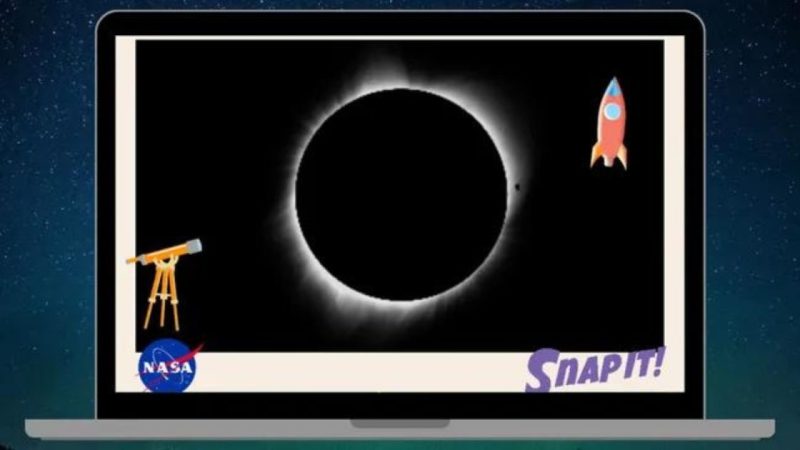NASA’s ‘Snap It!’ computer game teaches kids about solar eclipses: Here’s how to play

Excitement is building as we approach the one-time-in-history total solar eclipse on April 8. People across North America are eagerly waiting for the rare chance to witness this extraordinary event. NASA has taken advantage of this excitement by releasing a new computer game called “Snap It! An Eclipse Photo Adventure.” This interactive game is aimed at teaching children about solar eclipses in a fun and engaging way.
NASA explains that a total solar eclipse happens when the Moon moves between the Earth and the Sun, casting a shadow on our planet. During this event, observers can see the Sun’s beautiful corona, the wispy outer atmosphere, shining around the dark shape of the Moon. With the upcoming eclipse on the horizon, NASA saw an opportunity to create an educational game that would immerse children in the wonder of this cosmic phenomenon.
The total solar eclipse on April 8 will pass through Mexico, the United States, and Canada. It starts over the South Pacific Ocean and reaches Mexico’s Pacific coast around 11:07 a.m. PDT. Then, it moves through 15 U.S. states before ending on the Atlantic coast of Newfoundland, Canada, at 5:16 p.m. NDT, as per NASA.
In the Snap It! game, players help an alien visitor take 20 photos of eclipses and other solar events, according to NASA. The game is accessible on any internet-connected computer. Players use the keyboard and mouse to assist the alien in capturing photos, which are stored in an album with information about each object, like the Parker Solar Probe. Players can also create and download virtual postcards to share.
During the total solar eclipse, the moon will almost completely cover the sun, creating a path of totality about 100 to 123 miles wide. This allows viewers to see the sun’s corona. Safety is crucial for eclipse watchers. Everyone, even those outside the path of totality, should wear solar eclipse glasses. Cameras, telescopes, and binoculars should also have solar filters. Only those in the path of totality can safely view the corona without protection.
One interesting fact about this total solar eclipse is that Delta Airlines is offering eclipse enthusiasts the opportunity to view it from the sky. Flight DL 1218 from Austin to Detroit will offer an extended period within the eclipse path. The plane, an A220-300, boasts large windows for optimal viewing. Departing at 12:15 p.m. CT and arriving at 4:20 p.m. ET, passengers will catch the eclipse at its peak. Eric Beck, Managing Director of Domestic Network Planning, highlights the teamwork behind the flight’s planning.
Even if you’re not on this flight, Delta will provide eclipse-viewing opportunities on five other routes the day. Delta has advised passengers to bring protective glasses. Delta also flies to destinations within the eclipse path for ground viewing. Warren Weston, Delta’s Lead Meteorologist, underscores the rarity of this eclipse, the last over North America until 2044, and its extended duration compared to the 2017 event.
“This flight is the result of significant collaboration and exemplifies the close teamwork Delta is known for — from selecting an aircraft with larger windows to determining the exact departure time from Austin and the experiences at the gate and in the air,” Beck said in a statement.
Source here.


